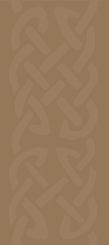![]()
Book I:
Lessons
Menu
| 1 | 2 | 3 | 4 |
| 5 | 6 | 7 | 8 |
| 9 | 10 | 11 | 12 |
| 13 | 14 | 15 | 16 |
| 17 | 18 | 19 | 20 |
| 21 | 22 | 23 | 24 |
| 25 | 26 | 27 | 28 |
| 29 | 30 | 31 | 32 |
| 33 | 34 | 35 | 36 |
| 37 | 38 | 39 | 40 |
| 41 | 42 |
exercise XIV
§ 103. THe digraphs in Irish
For the meaning of digraph, see §90. Some digraphs represent long vowel-sounds, and others represent short vowel-sounds.
§ 104. The long vowel-sounds are often represented by digraphs consisting of two vowels, one of which is marked long. Thus —
| ái | is sounded like | á | like the phonetic symbol au |
| éi | is sounded like | é | like the phonetic symbol ae |
| ói | is sounded like | ó | like the phonetic symbol ō |
| úi | is sounded like | ú | like the phonetic symbol oo |
§ 105. As will be seen, these digraphs are formed by adding i to the vowels á, é, í, ó, ú; and the sound of the vowel which is marked long is given to the whole digraph. This only difference between ái, ói, úi and á, ó, ú is that the consonants which follow the ái, ói, úi are slender. (See §8) Formerly, each vowel in the combinations was sounded separately; thus, áit, au-it, etc., and some trace of this can be heard in many words.
§ 106. NOTE—In Ulster ái is pronounced (aa) and ói (au). (See §78)
§ 107. Examples for pronunciation only: sáile (saul'-ĕ), báis (baush), fáis (faush), céis (kaesh), éille (ael' ĕ), féir (faer), próisde (prōsh-dĕ), cúis (koosh)
§108 Words
| áit | (aut), a place |
| cáibin | (kaub-'een) ¹, a "caubeen" |
| crúiscín | (kroosh'-keen) ¹, a pitcher |
| fáilte | (faul-tĕ), welcome |
| fód | (fōdh), a sod |
| folláin | (fŭL'-aun) ¹, sound, healthy, wholesome |
| láidir | (Laud'-ir), strong |
| míle | (meel'-ĕ), a thousand |
| móin | (mōn), turf |
| móna | (mōn'-ă), of turf: fód móna |
| páisde | (paush-dĕ), a child |
| sláinte | (sLaun'-tĕ), health |
1. In Munster, (kaub-een'), (kroosh-keen'), (fuL-aun')

note that
phonetic
symbols
are
not
necessarily
pronounced
as in English